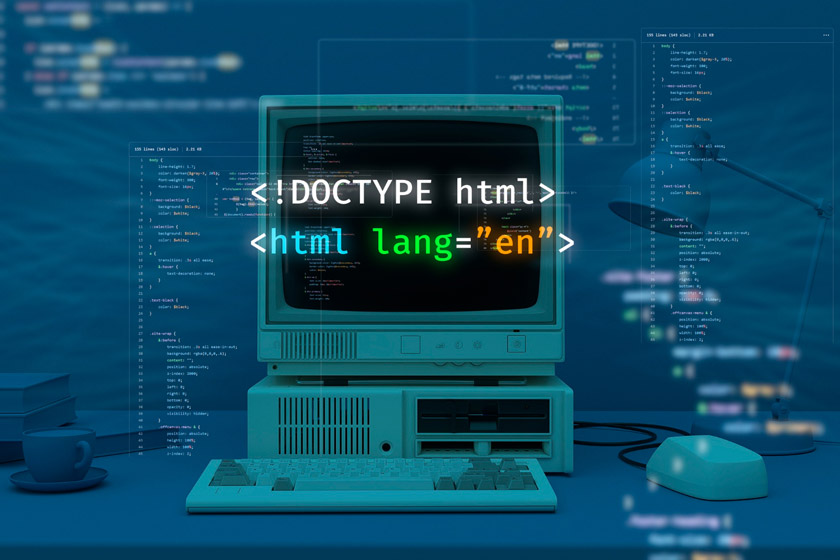According to the article “What is a Framework?“: In simple words, a framework is a tool used to simplify programming. In the past, creating software required complete mastery of a programming language and using all its features to develop more options in the program. At that time, programmers gave high importance to pointers and functions because their code quality depended on these things. But in modern programming, all these parts are automated to speed up the work. This is where frameworks play a crucial role. Frameworks provide pre-written and packaged solutions to minimize programming errors.
Suppose you are one of the programmers in Android application design, and you are looking for a programming language with attractive frameworks. In that case, Java is considered the best programming language for you. By knowing and using these Java frameworks, you can design the most effective and most practical applications. With this comprehensive article, you can learn about Java frameworks and choose the best one.
What is the meaning of framework in Java?
Java is a multi-purpose programming language used in many environments. Java is designed to run on Linux machines, Unix boxes, Macs, Windows, or even mobile phones. In fact, Java can be used everywhere.
Although Java may not be a straightforward language, you don’t have to write Java code from scratch. There are many remarkable Java frameworks with which you can write web, mobile, microservices, and REST API applications that run on the Java Virtual Machine.
With Java frameworks, it is possible to concentrate on the business logic of the application instead of writing essential functions, such as connecting to a database. Additionally, they handle errors. Frameworks can also help you get started programming faster if you are a freelance Java developer and have Java coding experience. All frameworks use the same grammar and provide the same terminology, paradigms, and concepts from the Java programming language. In the following, we introduce some of the most popular Java frameworks.
How many frameworks are in Java?
A popular programming language in Big Data, Machine Learning, Web Development, Android Development, etc., is Java. Thousands of developers have benefitted from Java’s versatility and power for more than 25 years as a versatile tool. Interviewbit reports that there are more than thirty Java frameworks available.
However, in the comparison of Java vs. JavaScript, there are more JavaScript frameworks than Java. It may even reach hundreds of frameworks.
But considering that in this article, we will discuss Java and its frameworks, we will introduce you to 9 of the most popular Java frameworks.

Blade framework
Blade is a simple, light, and high-performance Java framework for building web applications. Simplicity and elegance were the main goals of the creators of this Java framework. The framework includes the following features:
- Using the MVC software design pattern
- Easy to understand
- Not having many layers
- Designed for Java 8
- Having a Netty web server and template engine
- Size is less than 500 KB
- Few side-effects
DropWizard framework
It is a high-performance Java framework used for rapid RESTful web services development. The Dropwizard framework is only compatible with Java microservices. There are several independent Java libraries in this framework, which provide fast and discrete platforms. Furthermore, DropWizard provides the following features:
- This is supported by built-in Jetty servers, Google Guava, Logback, Hibernate Validator, and Joda Time, as well as other popular Java libraries.
- Having a jersey
- Building RESTful Web services
- Using Jackson to process JSON
- There is not much time left to use
- Focus on the basic business logic of the application
- Easy to learn
Grails framework
The framework is designed to help you create web applications using Groovy. Java developers can benefit from this framework because it is considered an object-oriented language. It has the same grammar as Java, and it can compile and access JVM (Java Virtual Machine) bytecode easily. The framework includes the following features:
- Following modern software development concepts
- Having a suitable environment for developers
- Powered by documentation, step-by-step guides, and an extensive plugin library
- Create your custom plugins
- Programmers can benefit from IDE support for Eclipse, Sublime, TextMate, IntelliJ IDEA, etc.
Spring Framework
Spring is an open-source Java framework available to programmers. It is used to design enterprise and corporate applications. With this framework, developers can create modules and use dependencies instead of libraries. Additionally, it has the following features:
- Very comprehensive framework
- Very powerful
- Security support and configuration
- Easy to learn
- It is the most famous web framework
- Find plenty of documentation and an active Spring developer community
Apache Struts framework
Apache Struts is a Java framework used in powerful web applications. This framework supports and uses three layers of MVC and JSP API. The advantages of this framework are:
- Safe and stable
- Ease of working with REST, SOAP and AJAX
- Ability to integrate with other Java technologies through plugins
- Support for templates
- Using POJO
Hibernate framework
Hibernate is a full-stack framework that has changed the way the database is viewed. Hibernate queries are known as HQL, and hibernate.cfg.xml is the main file in this framework. The files contain information about mapping Java classes to database configurations. Below is a list of its other features:
- Providing an abstraction layer for easy database access
- Facilitating tasks such as connecting to the database
JavaServer Faces framework (JSF)
The JSF framework, which stands for JavaServer Faces, is one of the Java frameworks with a three-layer architecture. With this framework, you can design component-based and event-based user interfaces. Like other Java frameworks, the JSF framework supports the Java EE platform. You can use all the components created by this framework in different projects. The advantages of this framework are:
- High-quality codes
- Stable and reliable
- Meeting standards
- Ability to create professional user interfaces
- A huge ecosystem and many tools and documentation
Play framework
The Play framework is one of the Java frameworks that is considered a reactive framework. You can design your own Java and Scala web applications using this Java framework. Unlike other Java frameworks, the Play framework is easy to learn and has a simple architecture. It supports three-tier architecture because it is written in Scala. The advantages of this framework are:
- Easy configuration
- Independent communication, no need for Java EE
- Simple design and implementation of various tests
- Simple learning process
Google Web Toolkit framework
The Google Web Toolkit framework is made by Google and Java, which has various tools such as Google Adwords and Google Wallet. If you want to develop client-side applications, the GWT framework is considered the best in this field. This framework is more about creating user interface components and reusing them. The advantages of this framework are:
- High quality
- Developing applications that run in all browsers and operating systems
- Pre-made widgets and command-line tools
- Support for localization and unit tests
- Simple learning
- Lots of documentation and tutorials
Vaadin framework
Vaadin is a Java-based framework. You can easily connect your desired data to the component using the pre-designed user interface components for web applications. The Vaadin framework supports mobile due to its full DOM access. The advantages of this framework are:
- High productivity
- Using standard web components
- Pre-designed components and skins
- Automatic client-side communication
- Excellent documentation and an active community
In conclusion
Choosing an appropriate framework is one of the most critical aspects of designing an Android application. In this field, Java language has very diverse and useful frameworks. Remember that knowing these Java frameworks is very practical and necessary for designing Android applications. In this article, we have fully introduced all Java frameworks.
